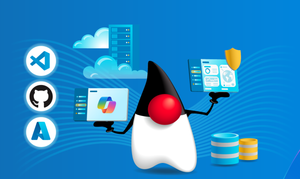
Exploring the OpenAI o1 Model: A Leap in AI Capabilities
The landscape of artificial intelligence continues to evolve at a rapid pace, and OpenAI’s latest offering, the o1 model, represents a significant leap forward. Designed to handle complex reasoning tasks, the o1 model stands out from its predecessors, such as GPT-4 and GPT-4O, by providing more thoughtful and accurate responses. In this blog post, we’ll delve into what makes the o1 model unique, how to determine which AI model to use for your projects, and the best use cases for the o1 model compared to other popular models.
What Sets the o1 Model Apart?
The o1 model is engineered to excel in complex reasoning tasks, such as coding and problem-solving. Unlike GPT-4, which is known for its general conversational abilities, the o1 model spends more time thinking through problems before responding. This deliberate approach allows it to provide more accurate and insightful answers, particularly in fields like science, math, and coding. In benchmark tests, the o1 model has performed on par with PhD students in challenging subjects like physics, chemistry, and biology, showcasing its advanced capabilities.
Another key difference is the o1 model’s ability to handle intricate logical sequences and multi-step problems more effectively than GPT-4O. While GPT-4O is an enhanced version of GPT-4 with improved language understanding and generation capabilities, it doesn’t match the o1 model’s depth in reasoning and problem-solving. This makes the o1 model a powerful tool for developers who need precise and reliable outputs for complex tasks.
Choosing the Right AI Model for Your Needs
Selecting the appropriate AI model for your project depends on several factors, including the complexity of the task, the required accuracy, and the nature of the problem you’re trying to solve. For general conversational tasks, GPT-4 or GPT-4O might be sufficient, as they are designed to handle a wide range of topics and provide coherent, contextually relevant responses.
However, if your project involves complex reasoning, coding, or scientific problem-solving, the o1 model is the better choice. Its ability to think through problems and provide detailed, accurate answers makes it ideal for applications that require a high level of precision and logical consistency. Additionally, the o1 model’s performance in academic benchmarks indicates its suitability for research and educational purposes.
Best Use Cases for the o1 Model
The o1 model shines in scenarios where complex reasoning and problem-solving are paramount. Here are some of the best use cases for this advanced AI model:
Scientific Research: The o1 model’s ability to handle complex scientific problems makes it an invaluable tool for researchers. It can assist in hypothesis generation, data analysis, and even in writing research papers by providing accurate and insightful content.
Coding and Software Development: Developers can leverage the o1 model to write, debug, and optimize code. Its deep understanding of logical sequences and problem-solving skills can significantly reduce development time and improve code quality.
Educational Tools: The o1 model can be used to create advanced educational tools that provide detailed explanations and solutions to complex problems in subjects like math, physics, and chemistry. This can enhance learning experiences and support students in their studies.
Technical Support: For companies providing technical support, the o1 model can offer precise and accurate solutions to complex customer queries, improving customer satisfaction and reducing resolution times.
Conclusion
The OpenAI o1 model represents a significant advancement in AI technology, offering unparalleled capabilities in complex reasoning and problem-solving. By understanding the unique strengths of the o1 model and comparing it to other models like GPT-4 and GPT-4O, developers can make informed decisions about which AI model to use for their specific needs. Whether you’re working on scientific research, coding, educational tools, or technical support, the o1 model provides a powerful and reliable solution for tackling the most challenging tasks.
As AI continues to evolve, the o1 model sets a new standard for what is possible, opening up exciting opportunities for innovation and discovery.
You can request access to the o1 model in Azure via a limited access program documented here.
Note: blog post created with the assistance of Microsoft CoPilot.
